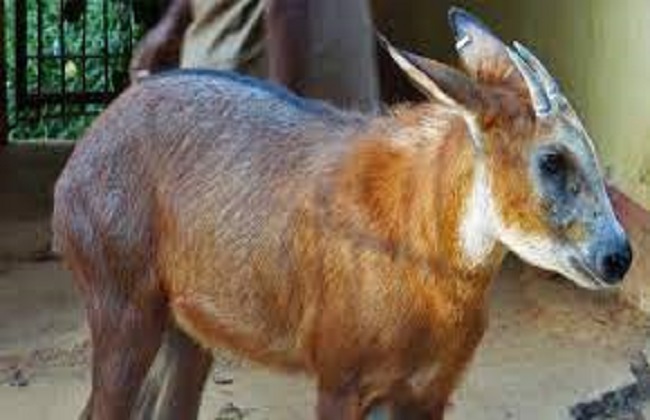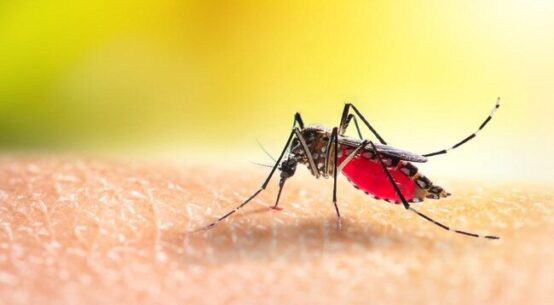
Even a few decades back, the red serow, a type of goat-antelope locally known in Bangladesh as bon chagol, was found in the hilly forests of Chattogram in the southeast and Sylhet in the east, but the animal is now hardly found due to indiscriminate hunting and destruction of its habitat.
On Jan. 25, 2020, the Bangladesh Forest Department rescued a red serow calf from Ali Kadam Upazila in the remote southeastern Bandarban hill district. Since then, there has been no official record of the red serow in the Chattogram Hill Tracts (CHT, previously known as Chittagong).
A.B.M. Sarowar Alam, project manager at IUCN Bangladesh, said there was a deficiency of data on the current status of the red serow (Capricornis rubidus) in Bangladesh. However, conservationists have said they believe the strange creature is still found in some areas of the country.
The red serow was widely distributed across the mixed evergreen forests of Bangladesh’s southeast and northeast and the forests in the north of Greater Mymensingh. The population has declined rapidly due to hunting for meat and habitat loss; at least 50% of its habitat has been severely degraded over the last decade.
According to the International Union for Conservation of Nature (IUCN), currently, the red serow occurs mainly in the mixed evergreen forests of the Chattogram Hill Tracts and rarely in the forests of greater Sylhet, bordering Indian territories.
Kamrul Hasan, a zoology professor at Jahangirnagar University, said hunters are the main threat to the serow population in Bangladesh. “The size of serows is a little bit bigger, so hunters target the goats,” he said.
Local ethnic people in Bangladesh hunt and eat wildlife, including these forest goats. Hunters from neighboring Indian states Tripura and Mizoram often enter Bangladesh territory through the leaky border and gun down rare wild animals, including serows, which has contributed to the animals’ rapid population decline.
However, a survey of the Bangladesh Forest Department, conducted in Baroiyadhala National Park of Sitakunda under the Chattogram North Forest Division, has created a ray of hope about the existence of serows in Bangladesh.
Under the Sustainable Forests & Livelihoods (SUFAL) Project of the Forest Department, the camera-trapping survey was conducted between January 2021 and March 2023 to assess the number and species of wildlife in this national park.
“We installed cameras at 48 places in the forest. At least 22 of these cameras captured images of red serows. But the number of forest goats was less than other wild animals,” Hasan, also the principal investigator of the survey, told Mongabay.
He said that although the survey has brought hope for the serows’s existence, the cameras captured several instances of footage showing roaming armed hunters, which is a matter of concern.
Another threat to red serows in Baroiyadhala National Park: Hunters also set fire to the forest during the dry season to clear the brush, the wildlife researcher said.
Once the forest is razed after fire, serows start roaming to look for safe shelter, and hunters take advantage, putting the existence of the species at risk, Hasan said.
Red serows, declared endangered in Bangladesh, occur particularly in mixed evergreen forests in the hills and mountains, since they love to take shelter on steep, rocky slopes. They remain most active at dawn and dusk and rest in thick vegetation during the day. The forest goats usually live solitary lives but rarely move in small groups.
Divisional forest officer Rezaul Karim Chowdhury said earlier this year camera-trap images in Rajkandi Reserve Forest in northeastern Bangladesh also captured evidence of the red serows.
The wild goats prefer deeply forested areas and rocky riparian terrains to live in, he said, and people frequently enter their habitats. “As the red serows cannot run fast, poachers can easily hunt them,” Chowdhury said.
Hasan suggested conducting another survey on Hazarikhil Wildlife Sanctuary in Chattogram to assess the goat-antelope population there and the conservation status of the whole landscape.
“The rocky mountain area of Mirsharai, Sitakunda and Hazarikhil of Fatikchhari is an ideal habitat for red serows. If proper conservation efforts are taken there, the rare species will return to nature with a good number,” he said.
Rafiqul Islam is an environment and development journalist based in Dhaka, Bangladesh. He has been reporting on the environment, climate change, conservation, development and human rights.


